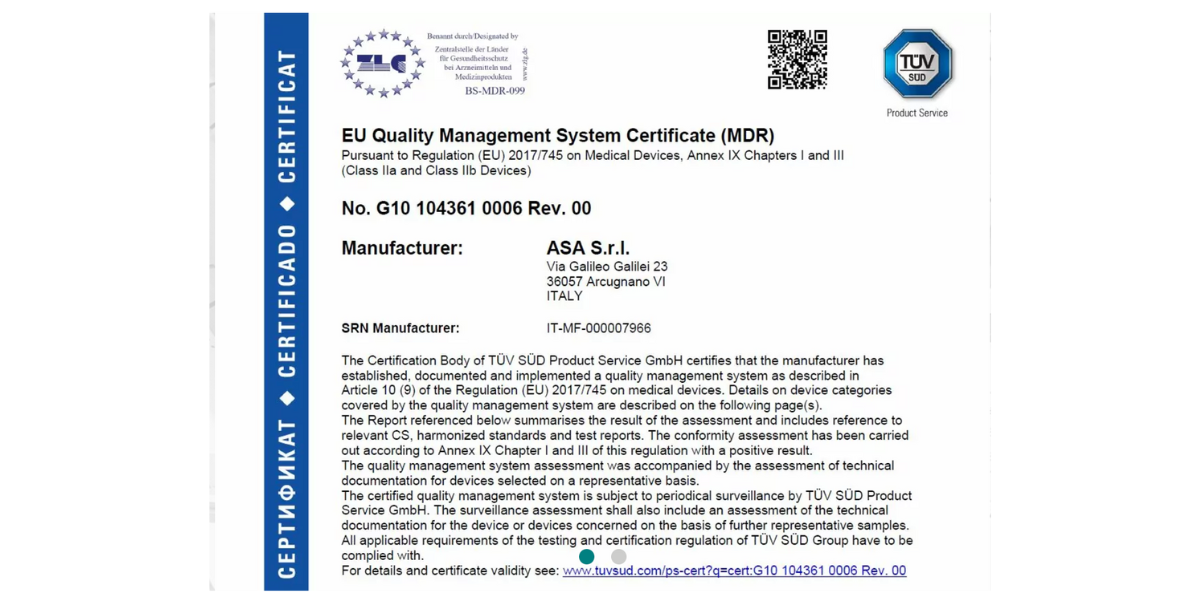Find out more about how this website uses cookies to enhance your browsing experience.
Understanding the Differences Between MDR Approval and FDA Approval

When it comes to launching a medical device, regulatory approval is a critical milestone. All of the devices we sell at Celtic SMR Ltd have European Medical Device Regulation (MDR) approval meaning they are thoroughly tested to meet standards for safety and effectiveness. Another widely recognised regulatory framework is the United States Food and Drug Administration (FDA).
In the UK, we regularly see companies speaking about MDR and FDA approval but what does that actually mean? Both frameworks aim to ensure the safety and efficacy of medical devices but differ significantly in scope, approach, and implementation. Here’s a comprehensive breakdown of these differences.
Scope and Jurisdiction
MDR: The Medical Device Regulation (MDR), effective from May 2021, governs the approval of medical devices in the European Union (EU). It replaced the previous Medical Device Directive (MDD) to enhance device safety, transparency, and traceability.
FDA: The U.S. Food and Drug Administration regulates medical devices in the United States. The process is governed by the Federal Food, Drug, and Cosmetic Act (FD&C Act) and specific FDA regulations under Title 21 of the Code of Federal Regulations (CFR).
Classification of Devices
MDR: Devices are classified into four classes based on risk—Class I (low risk), Class IIa and IIb (moderate risk), and Class III (high risk). The classification considers the duration of contact with the body, invasiveness, and impact on patients.
FDA: Devices are categorized into three classes:
- Class I: Low risk, often exempt from premarket submission.
- Class II: Moderate risk, requiring a Premarket Notification (510(k)) or De Novo request.
- Class III: High risk, requiring a Premarket Approval (PMA).
Pathways to Approval
MDR:
- Conformity Assessment: Conducted by Notified Bodies, independent organizations accredited by EU member states.
- Clinical Evidence: Emphasizes robust clinical evaluation, including clinical trials for higher-risk devices.
- CE Marking: Devices approved under MDR receive a CE Mark, indicating conformity with EU standards.
FDA:
- 510(k): Demonstrates that a device is substantially equivalent to an already marketed device.
- PMA: A stringent pathway requiring scientific evidence of safety and effectiveness for Class III devices.
- De Novo: Provides a pathway for novel devices that lack a predicate.
Regulatory Focus
MDR: Places a strong emphasis on post-market surveillance, device traceability, and transparency. Manufacturers must maintain a comprehensive technical file and proactively report adverse events.
FDA: Focuses on risk-based evaluation, balancing safety with innovation. Post-market requirements include reporting adverse events through the Medical Device Reporting (MDR) system and compliance with Quality System Regulation (QSR).
Clinical Evidence Requirements
MDR: Demands extensive clinical data, including post-market clinical follow-ups (PMCFs). Clinical trials conducted under MDR guidelines must meet strict ethical and scientific standards.
FDA: Requires clinical data primarily for Class III devices. While some Class II devices also need clinical studies, the requirements are generally less stringent than under MDR.
Documentation and Transparency
MDR: Requires a detailed technical file, labelling in all relevant EU languages, and compliance with the Unique Device Identification (UDI) system. Information is accessible through the European database on medical devices (EUDAMED).
FDA: Documentation includes a device master record, design history file, and compliance with the FDA’s UDI rule. Transparency is achieved through databases like the FDA’s Device Registration and Listing Database.
Timelines and Costs
MDR: The approval process can be time-consuming due to the involvement of Notified Bodies and rigorous clinical evaluation. Costs may be higher due to additional compliance and clinical requirements.
FDA: Timelines vary widely based on the pathway. For example, a 510(k) submission typically takes 90 days, whereas a PMA can take several months to years. Costs depend on the submission type, with PMAs being more expensive.
Key Challenges
MDR:
- Transition from MDD to MDR has posed significant challenges for manufacturers.
- Limited availability of Notified Bodies.
- Stringent requirements for legacy devices.
FDA:
- Navigating complex regulatory pathways.
- Balancing innovation with compliance.
- Variability in review timelines.
Conclusion
While both the MDR and FDA frameworks aim to ensure the safety and efficacy of medical devices, their approaches reflect regional priorities and regulatory philosophies. MDR is highly stringent and relevant to the EU and UK markets. Before purchasing any medical device, including shockwave, therapeutic laser, x-ray or ultrasound, make sure they carry appropriate MDR approval to ensure you are purchasing a safe, effective device.
You can find out more about UK medical device regulation on the government website HERE.